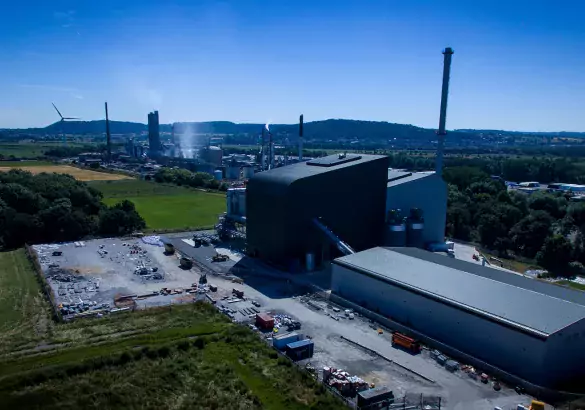Removing dioxin at biomass plant
United Kingdom

The challenge
In Europe, regulations limit emissions of acidic pollutants and dust, but also of micropollutants, in particular dioxins, furans and volatile heavy metals such as mercury, cadmium, etc.
Ince BioPower is a waste wood biomass plant using gasification technology. It was designed with separate lime and AC dosing systems for removal of acidic and micropollutants from their process. However, it became apparent that the carbon dosing installation did not fully satisfy the ATEX Directives for safe storage and dosing of carbon-based sorbents.
To overcome this issue, Lhoist were asked to produce a suitable blend of Sorbacal SP and micropollutant removal sorbent to see if a single product could be used as a multi-pollutant removal reagent. Ince BioPower were keen to investigate if using Sorbacal Micro 4099, an inorganic mineral alternative to activated carbon would enable them to successfully replace carbon-based sorbents completely from their process.

The benefits
In comparison to carbon-based sorbent blends:
- Comparable dioxin/furan abatement performance.
- Local emissions levels for dioxins/furans achieved with ease with no breaches during testing phase.
- Similar Consumption rates. Zero risk of hot spark carry over from carbon concentration, therefore removing risk of filter bag damage.
- Sorbacal Micro 4099 is a Lhoist development, providing an assurance of product quality, performance and expert technical support where required.
- Peace of mind regarding enhanced safety.
The Lhoist solution
A carefully selected blend of Sorbacal SP and Sorbacal Micro 4099 was produced for Ince BioPower to evaluate in their process. The objective was to meet the required plant emissions limits for both acidic pollutants (SO2 , HCl, HF) and micro-pollutants (Dioxins/ Furans).
In comparison to the existing Sorbacal SP and carbon blend being used, emissions data during the trials for both acidic pollutants and micropollutants indicated that the Sorbacal SP and Sorbacal Micro 4099 is equally effective at ensuring all pollutants levels are well within site permit levels.
This blended product, Sorbacal Micro 4410, also had similar consumption rates to the Sorbacal SP and carbon blend and on this basis the Customer has committed to continue using this product in its process.